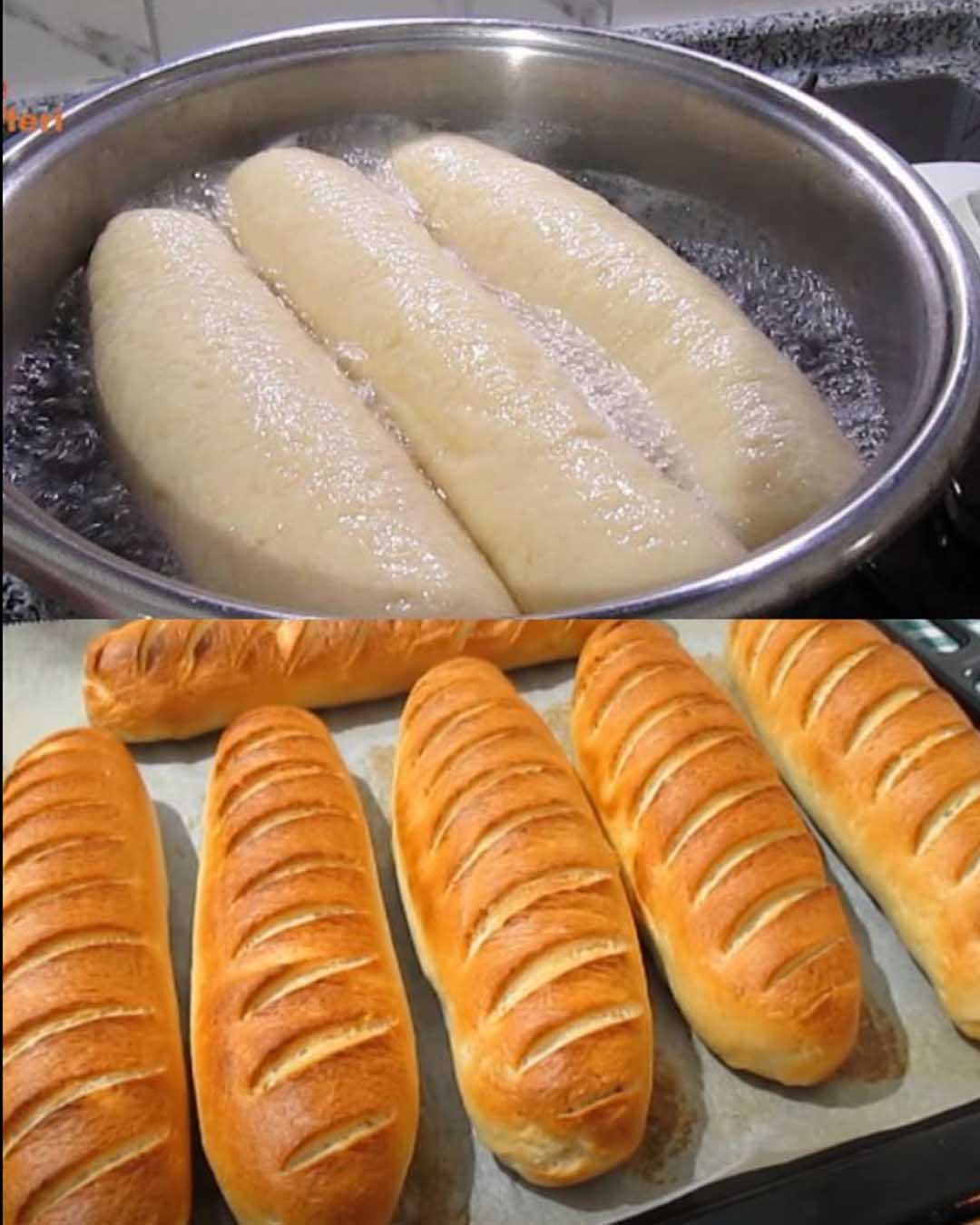If you’re tired of store-bought bread and want to try making your own at home without the need for an oven, this recipe is for you! This bread is soft, flavorful, and incredibly satisfying. The best part? You can make it without an oven, and it’s so delicious that you’ll never want to buy bread again.
This unique method involves boiling the dough before finishing it off, resulting in a bread that’s chewy on the outside and soft on the inside. Perfect for sandwiches, breakfast, or as a snack, this bread will quickly become a staple in your kitchen.
Full Recipe:
Ingredients:
- 5 cups flour: Provides the base for your dough. Use all-purpose flour for the best texture.
- 2 cups warm milk: Activates the yeast and helps create a soft, tender dough.
- 1 cup of oil: Adds moisture and richness to the dough, making it soft and flavorful.
- 1 tablespoon dry yeast: The leavening agent that helps the bread rise and gives it a light texture.
- 1 tablespoon of granulated sugar: Feeds the yeast and adds a slight sweetness to the bread.
- 1 teaspoon salt: Enhances the flavor of the bread and balances the sweetness.
For Boiling the Dough:
- 2.5 – 3 liters of water: Enough to submerge the dough completely during the boiling process.
- 1 teaspoon salt: Adds flavor to the boiling water, which helps season the bread as it cooks.
Instructions:
- Prepare the Dough:
- In a large mixing bowl, combine the warm milk, dry yeast, and sugar. Stir gently and let it sit for about 5-10 minutes until the mixture becomes frothy. This indicates that the yeast is active.
- Gradually add the flour, salt, and oil to the yeast mixture. Mix until a sticky dough forms.
- Turn the dough out onto a floured surface and knead for about 10 minutes, adding more flour if necessary, until the dough becomes smooth and elastic.
- Let the Dough Rise:
- Place the kneaded dough back into the mixing bowl, cover it with a clean kitchen towel or plastic wrap, and let it rise in a warm place for about 1-2 hours, or until it has doubled in size.
- Shape the Dough:
- Once the dough has risen, punch it down to release any air bubbles. Divide the dough into equal portions, depending on the size of the bread you want to make.
- Shape each portion into a round or oval loaf.
- Boil the Dough:
- Bring 2.5 – 3 liters of water to a rolling boil in a large pot. Add the teaspoon of salt to the boiling water.
- Carefully place the shaped dough portions into the boiling water, a few at a time, making sure not to overcrowd the pot.
- Boil each portion for about 1-2 minutes on each side, until they puff up slightly and become firm.
- Finish the Bread:
- Remove the boiled dough from the water using a slotted spoon and place it on a baking sheet lined with parchment paper or a greased surface.
- Let the boiled dough cool slightly before slicing or serving.
- Serve and Enjoy:
- This bread is best enjoyed warm, fresh from the pot. Serve it with butter, jam, or as a base for sandwiches. The unique texture and flavor will make this a favorite in your household.
Cooking Tips:
- Keep the Dough Soft: The key to a good texture is keeping the dough slightly sticky before kneading. Don’t add too much flour, or the bread may become dense.
- Flavor Variations: Add herbs, cheese, or garlic to the dough for different flavors. You can also brush the tops with melted butter and sprinkle with sesame seeds or poppy seeds before boiling.
- Storage: Store any leftover bread in an airtight container at room temperature for up to 3 days. This bread also freezes well; just wrap it tightly in plastic wrap and place it in a freezer bag. Thaw at room temperature before serving.
Nutritional Facts (per serving, based on 10 servings):
- Calories: Approximately 250
- Protein: 5g
- Fat: 10g
- Carbohydrates: 35g
- Fiber: 2g
- Sugar: 1g
Possible Questions:
- Can I use whole wheat flour instead of all-purpose flour?
- Yes, you can substitute whole wheat flour, but the bread may be denser. You might want to mix it with some all-purpose flour for a lighter texture.
- Can I bake the bread instead of boiling it?
- The boiling step is crucial for the unique texture of this bread. Baking alone will give you a different result, more like a traditional loaf.
- What can I serve with this bread?
- This bread is versatile and can be served with soups, salads, or as a sandwich base. It’s also delicious with just a pat of butter or a drizzle of honey.
- How do I know when the dough is ready to boil?
- The dough should have doubled in size and be light and airy to the touch. If it doesn’t bounce back when pressed, it’s ready.
Conclusion:
This no-oven bread recipe is a game-changer for anyone looking to make homemade bread quickly and easily. The boiling method gives the bread a unique, chewy texture that’s both satisfying and delicious. Perfect for breakfast, lunch, or dinner, this bread is sure to become a household favorite. Give it a try, and you’ll never go back to store-bought bread again!
